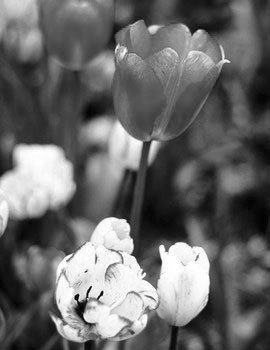I was chatting with an acquaintance the other day, someone who
professes to read my column from time to time. She asked me if I
had a favorite, a column I had written that brought me great
pride.
I was chatting with an acquaintance the other day, someone who professes to read my column from time to time. She asked me if I had a favorite, a column I had written that brought me great pride.
I had to think for a bit, then stated my favorite was a column I had done about music and wine (you can check the archives for this article – July 8, 2006).
As soon as I stated this, she suggested I do a similar article on wine and flowers. I readily agreed to this, not only because she was drop-dead gorgeous, but the timing was perfect.
Spring is in the air, Mother’s Day is approaching and many gardeners are getting ready to put new flowering plants in their yards.
For advice on flowers, I turned to my good friends at Goldsmith Seeds, a world-renowned wholesale breeder of flower seed.
Goldsmith Seeds, in conjunction with the Gilroy Rotary Club, is holding their annual Flower Sale Saturday from 8am to 1pm. Proceeds from this event go to support local charities.
This event comes on the heels of Goldsmith’s Spring Trials, when hundreds of new plants and hybrids are introduced to the nursery and greenhouse industry.
The greenhouses at Goldsmith’s are bursting with color, and even better, with great aromas. Wine is sometimes described as being floral, both in red wine and more commonly with white wines.
The floral smells in wine are the same ones you often find in perfume, so much so that both wine and perfume can be affected by being exposed to air, heat and the unique physical chemistry that makes us individuals.
Daisy: I love the simplicity of the daisy, its name coming from the ancient Anglo-Saxon phrase “daes eage,” or “day’s eye.”
White daisies are classic innocence and pure joy, but purple and pink daisies may surprise your true love.
This flower would go well with a nice German Riesling.
Iris: Planted through the countryside of France, this eye-catching burst of nature would do justice to either white or red Burgundy.
The allure of the flower is how restrained it is in bud form, but when it blooms, whoa!
Almost always dropping an equal number of petals downward to those blooming upward forms a parallel to how well-rounded Burgundian wines can be.
Orchid: Some are edible, so naturally, they have to make the list!
The orchids I am familiar with look so fragile, like a strong breeze would whisk away the few remaining petals on the stalk, yet these plants are resilient.
If nurtured and cared for properly, the results can be magnificent – just like a great pinot noir.
Tulip: Let yourself tip-toe through the vast array of colors, every one announcing the arrival spring.
Soft, tropical scents come through with great subtlety. Like a good sauvignon blanc from New Zealand, this is the “rose” of the new millennium.
Lavender: Like merlot, this plant can be found flourishing all over the globe. It requires little maintenance or water yet can produce some amazingly complex aromas. Dry and full bodied, its true character is revealed best when rubbed between your fingers, much like wine swirled in a glass.
Lily: One of my favorites for both color variation and nuanced aromas. It also makes a great centerpiece for any table, especially for brunch. What will get brunch and conversation started faster than great Champagne? How about a sparkling Moscato d’Asti from Italy or a sparkling Cava from Spain!
Hibiscus: This plant comes to life in the month of April, just like the IRS. Send one of these to your accountant. I cannot guarantee a better tax return, but the rattled nerves of your numbers-cruncher will be soothed. Hibiscus is spicy in aromas and colors. It melds perfectly with a viognier, which can often take on the smell of orange blossoms and honeysuckle, too.
Gazania: Quite fragrant, this plant thrives under hot and dry conditions. These long-blooming annuals are reminiscent of the long growing season and climate conditions that bring out the best in old-world and new-world cabernet sauvignon.
Flowers, like wine, can bring us the sensory stimulation we need to cope with life. The colors, smells and tastes help bring a sense of rejuvenation to our physical, emotional and spiritual well-being.













